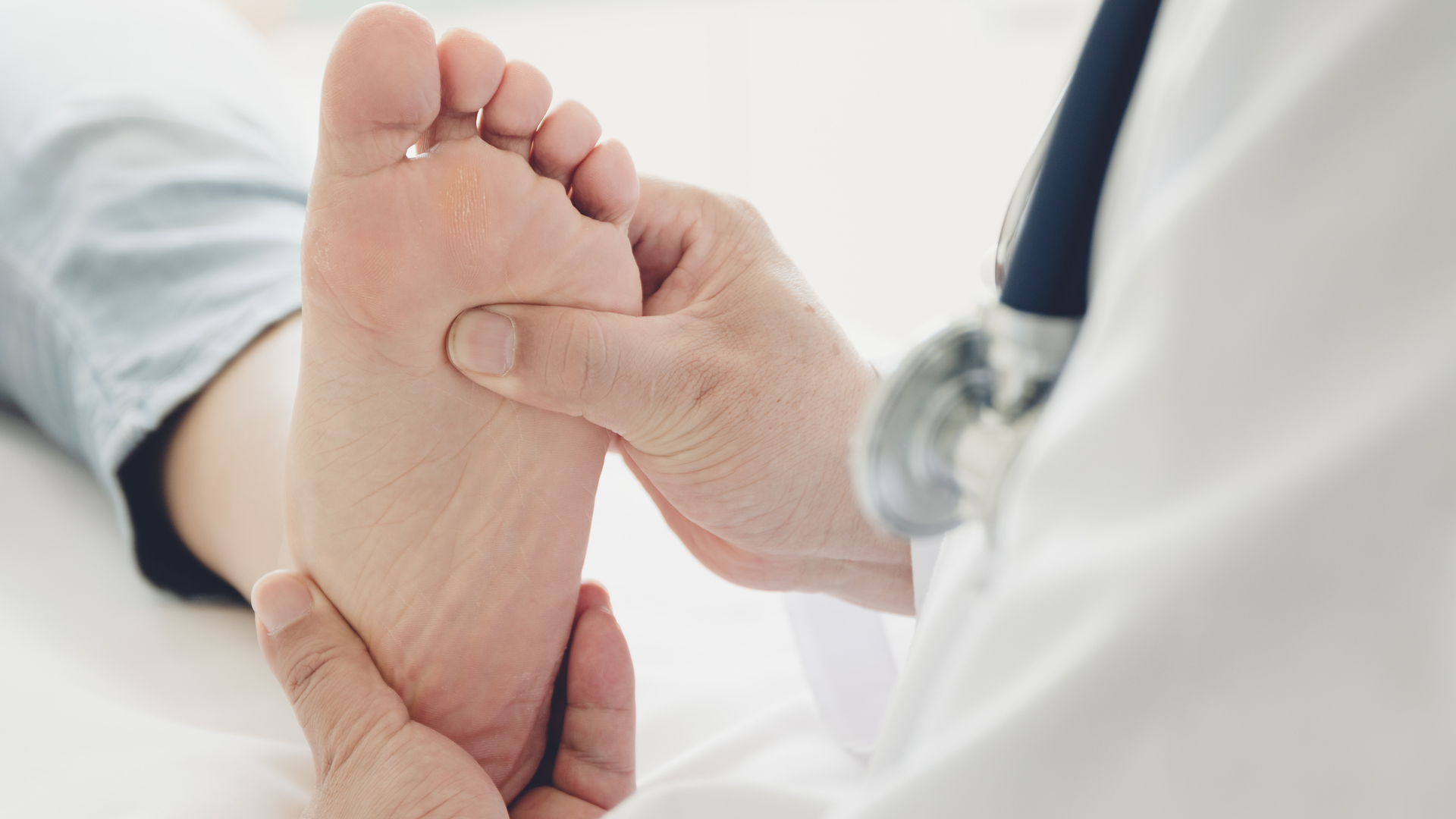What keeps your feet healthy - and how ATLAS shoes can help
Our feet carry us through everyday life - step by step, hour by hour. They perform hard labour every day and are often exposed to enormous strain: standing for long periods, hard shoes, monotonous movements or damp environments are just some of the challenges. So it's no wonder that many people suffer from foot disorders sooner or later - whether due to overloading, incorrect footwear or a lack of care.
Heel spur & plantar fasciitis - when every step hurts
Heel spurs - often associated with plantar fasciitis - are one of the most common causes of heel pain. This is a painful irritation or inflammation of the plantar fascia, i.e. the tendon plate on the sole of the foot. At an advanced stage, a small, bony spur often forms on the heel.
Causes:
The main cause is permanent incorrect or excessive strain, for example due to
1. prolonged standing or walking on hard floors
2. unsuitable, poorly cushioned footwear
3. foot malpositions such as fallen arches or splayfoot
Prevention and treatment:
The most important measure is to wear gentle footwear with good cushioning and an ergonomic footbed - this is where high-quality ATLAS safety shoes come into play. Our models have integrated cushioning systems, shock-absorbing outsoles and an anatomical fit that takes pressure off the heel. In addition, regular stretching exercises for the calf and foot muscles help to keep the fascia supple.
Nail fungus (onychomycosis) - more than just a cosmetic problem
Infection of the toenails with fungi occurs more frequently than many people think. The nail usually turns yellow, thickens, splinters or becomes brittle. If the fungus is not treated, it can spread to neighbouring nails or the skin.
Causes:
1. warm and humid environments (e.g. in work shoes without sufficient ventilation)
2. minor injuries or pressure points on the nail
3. walking barefoot in public showers or changing rooms
Prevention:
The best prevention starts with the right footwear: ATLAS relies on breathable high-tech materials such as aktiv-X functional linings, which effectively regulate moisture and thus prevent an unfavourable microclimate. Regular drying and cleaning of shoes and wearing functional socks can also significantly reduce the risk.
Early treatment with antifungal agents can help at the first signs - medical advice should be sought in the case of persistent fungal infestation.
Athlete's foot - underestimated but widespread
Athlete's foot (tinea pedis) is one of the most common infections in the foot area. Redness, itching, scaling or moist skin cracks between the toes are typical symptoms.
Causes:
1. moisture and heat in the shoe
2. inadequate ventilation
3. walking barefoot in communal showers or swimming pools
Prevention:
This shows once again how important breathable safety shoes are. ATLAS models support a foot-friendly climate thanks to modern materials, antibacterial linings and sophisticated ventilation systems - even during long periods of use. In addition, clean your feet thoroughly every day, dry them well (especially between the toes) and change or air your shoes regularly.
Corns - small pressure points with a big impact
Corns are caused by prolonged pressure or friction in certain areas of the foot, for example from shoes that are too tight or incorrectly fitted safety shoes. They usually form on the toes or under the ball of the foot.
Causes:
1. unsuitable or too tight footwear
2. foot misalignment
3. prolonged standing in a one-sided posture
Prevention:
ATLAS safety shoes are made to fit precisely and in different widths. A customised fit and soft inner padding ensure that there are no excessive pressure points - ideal for people with sensitive feet. Special pressure protection plasters or podological treatments can help with existing corns.
Hallux valgus - when the big toe is out of line
Hallux valgus is a deformity of the big toe that usually develops gradually. The toe leans towards the outside of the foot, the metatarsophalangeal joint protrudes and becomes easily inflamed.
Causes:
1. genetic predisposition
2. foot misalignment
3. tight or unergonomic shoes
Prevention:
In the case of incipient deformities, it is important to wear footwear that is suitable for the foot and wide. Many ATLAS models are available in different widths and, thanks to their ergonomic shape, allow more space in the forefoot area - without losing protection or stability. Orthopaedic insoles or customised footbeds, which are compatible with our models, can also help.
Conclusion: Healthy feet start with the right shoe
Whether in trade, industry or on the construction site - our feet are subjected to a lot of strain every day. Prevention not only protects foot health, but also maintains mobility, performance and quality of life in the long term.
ATLAS safety shoes offer more than just protection: they are specifically designed to prevent foot complaints - with a perfect fit, intelligent cushioning, breathable materials and a construction that relieves the musculoskeletal system. After all, healthy feet cannot be taken for granted - they are the result of attention, care and the right equipment.
A final tip:
Have your feet checked regularly - for example with an orthopaedic consultation or an individual shoe analysis. This will enable you to recognise malpositions or stress problems at an early stage - and take targeted countermeasures.

